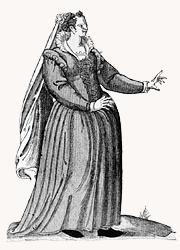
Aim of Task: To learn about the status handled on stage to further apply it to Comedia performances.
Description of Task: Our teacher, Steve, asked us to group ourselves in couples. Each one of us had a pair, mine was Jason. He told us that one of us would be the master and one would be the servant. The master would first tell his servant what he had to do and all the servant had to do was follow orders. I tried to make the exercise interesting and tell Jason to do funny things, like flirt with other people in the classroom. Then Steve told us that the servant should reply "yes master" to everything the master said. So for every command that I gave to Jason, Jason would have to reply "yes master." It was nice to feel that your orders were received in such a pleasant way, and obeyed without complaints. After that, the servants not only had to reply "yes master" to everything but also had to give a suggestion to the order that the master gave to them. For example, if I asked Jason to draw a dog in the board he would say "yes master, but, wouldn't it be better if I drew a cat instead?" As a master, this started to become a little bit annoying because it didn't feel like my orders were always followed unconditionally. Then I had to become the servant to Jason. Jason started asking me to do lots of stuff, and after a while, I also started replying yes master and then yes master and offer a suggestion as he had done with me. I felt that perhaps I wasn't saying "yes master" as eagerly as I should have said it considering that he was my master. Then, I tried to suggest things but it didn't feel good when he would deny my suggestions and I always had to do what he said. I felt inferior to him, he was in charge of my actions, I wasn't. After the master and servant exercise, we did something similar to what we had done in a previous workshop. In pairs, and in different exercises, each one of us had to:
- Raise our status and lower the other person's status.
- Raise the other person's status.
We did this in conversations. To raise the other person's status the most effective thing was to give them compliments and show amazement for everything they said about themselves. However, to raise your own status, and lower the other person status, you had to say why everything you did was better than what the other person did. It was a fun exercise, in my opinion.
The last exercise that we had to do was a script that was given to us. We had to try it with different combinations between low and high status between the two characters. I noticed that when both people hold low status, the acting turns less interesting and boring. When both people had high status, it wasn't too boring but it also wasn't as entertaining as seeing somebody with high status and somebody with low status.
I really liked the way Prodhi and Adam presented the extract. Prodhi showed high status while Adam showed low status. To show high status, Prodhi put one of her legs on the chair and started talking to Adam, who was seated. Prodhi's voice was a lot more eloquent and loud than Adam's voice. Also, Adam almost fled from stage at the end of the extract.
Reflection: Status is show by the tone of voice, body expressions, posture, attitude towards other characters in stage... I think status is how concerned is the character of what other actors do. A high status character will not care about other characters on stage while a low status character will be so worried about his actions that he will always be aware of how his actions can affect other people on stage.
Conclusion: Status will be very useful for comedia: some combinations of status can turn out to be really funny like both characters with low status or both characters with high status. Since I first heard about status, I have been interested on its applications to our daily social life. Status is something that can be seen everyday in social situations, which is why I find it so interesting. I hope to learn more about it through the theatre course although I've already been reading something about it. It is probably one of the theatre techniques I'm mostly interested in.







